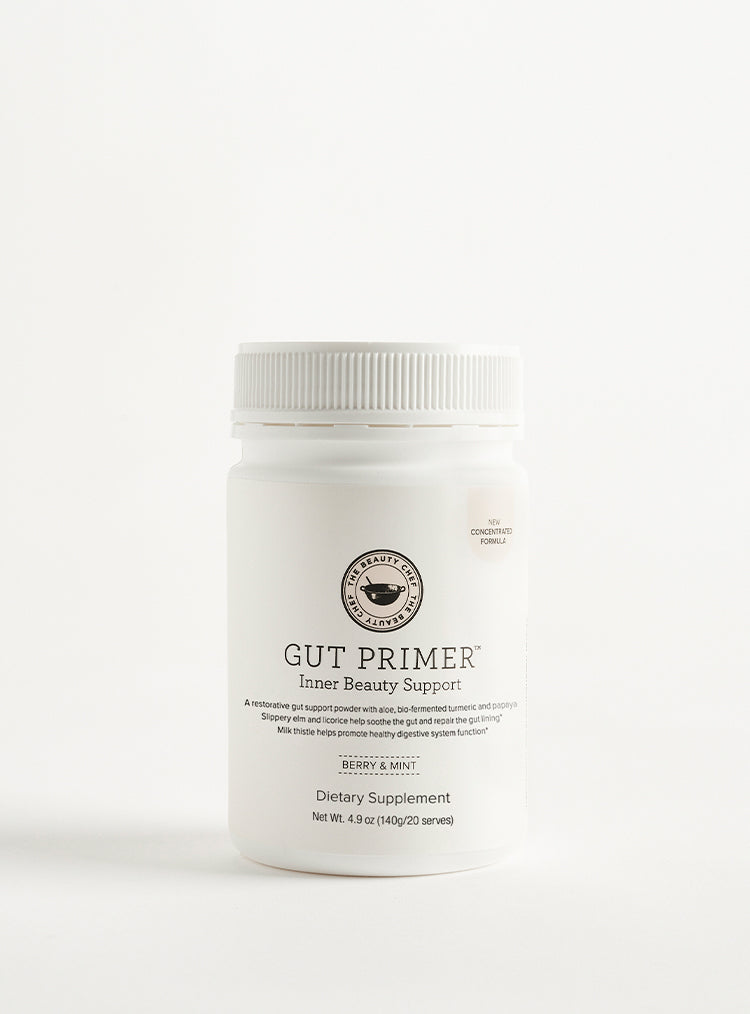
By Carla Oates
If you’ve ever dealt with a gut health issue—it’s likely you’ve come across the low-FODMAP diet.
But unlike simply ditching gluten, dairy or other triggering foods in the name of improved gastrointestinal health, avoiding FODMAPs can be slightly trickier. While “the low-FODMAP diet may benefit those with IBS, bloating or IBS-type symptoms, it is recommended to see a doctor and a gut health or FODMAP-trained dietitian first,” says Kiarra Martindale, Accredited Dietitian, Sports Dietitian, Anthropometrist, Nutritionist and Gut Health and FODMAP Friendly Dietitian.
Below, Kiarra helps to break down what FODMAPs actually are and why following a low-FODMAP diet may be beneficial for some people.
What are FODMAPs?
“FODMAPs are a collection of short chain carbohydrates and sugar alcohols that are naturally found in some foods or as food additives,” explains Kiarra. “FODMAPs include fructose (when in excess of glucose), fructans, galacto-oligosaccharides (GOS), lactose and polyols—for example, sorbitol and mannitol.
FODMAP is an acronym for:
Fermentable—meaning they are broken down (fermented) by bacteria in the large bowel
Oligosaccharides—’oligo’ means ‘few’ and ‘saccharide’ means sugar so these molecules made up of individual sugars joined together in a chain.
Disaccharides—’di’ means two so this is a double sugar molecule.
Monosaccharides—’mono’ means single so this is a single sugar molecule.
And
Polyols—these are sugar alcohols.”
Which foods contain FODMAPs?
“There are many foods which contain FODMAPs but some high-FODMAP foods include wheat-based breads, cereals and pasta, garlic, onion, honey, apples, pears, mango, stone fruits, sugar-free mints and gum, legumes such as silken tofu and beans, inulin, chicory root, cow’s milk, many dairy-based yoghurts and soft cheeses, custard, ice creams, chocolate and some sweeteners… to name a few!”
How does the low-FODMAP elimination diet work and how long should it be followed for?
“There are three phases to the low-FODMAP diet so it’s recommended to have the support and guidance of a gut health and FODMAP-trained dietitian during this journey. Below is a breakdown of the different phases…
Phase 1: the initial phase of the low-FODMAP diet swaps high-FODMAP foods for low-FODMAP alternatives. One example would be switching cow’s milk for almond milk. This phase can last between 2–6 weeks with the aim of symptom improvement.
Phase 2: this is the reintroduction phase and is important following symptom improvement to identify which specific FODMAP groups trigger an individual’s symptoms. This phase may last between 8–12 weeks and involves three-day challenges where different FODMAP groups are introduced separately. This is followed by 2–3 days back on the low-FODMAP diet to minimise any symptoms. There are usually 8–10 challenges and once specific FODMAP groups are identified to trigger symptoms versus well-tolerated FODMAPs, phase 3 may occur.
Phase 3: is the personalisation phase of the low-FODMAP diet and may be lifelong. This phase is important to reintroduce the FODMAP groups back into the diet that were well tolerated in phase 2. The more FODMAPs that can be reintroduced in the diet with zero or minimal symptoms, the more variety of foods we are able to include—which overall, is better for our gut health.
As FODMAPs include prebiotics which are so important for gut health and as FODMAP tolerance may change over time, individuals are encouraged to re-challenge FODMAPs in order to reintroduce them back into the diet, where possible.”
What can I eat on the low-FODMAP diet?
“While there are lots of foods that contain FODMAPs, there are also so many low-FODMAP foods in each food group that are able to be enjoyed. For example…
Fruits: oranges, lemons, raspberries, blueberries, kiwi fruit and pineapple
Vegetables: spinach, red capsicum, carrots, radish, silverbeet and potatoes
Meat and alternatives: plain meats, fish, chicken, turkey and firm tofu
Dairy products and alternatives: rice milk, almond milk, lactose-free milks, Greek yoghurt, eggs and hard cheeses
Legumes: ¼ cup canned chickpeas and ½ cup canned lentils that are rinsed and strained”
What are some of the indicators that you should switch to a low-FODMAP diet?
“A diet low in FODMAPs is scientifically proven and is now used internationally as the most effective dietary therapy for IBS symptoms and Irritable Bowel Syndrome (IBS) and symptoms of an irritable bowel—including excessive wind, abdominal pain, bloating and distension, nausea and changes in bowel habits (diarrhoea and/or constipation). So if you’ve been diagnosed with Irritable Bowel Syndrome (IBS), then the low-FODMAP diet may be for you as it is evidenced to help up to 85% of those with IBS—minimising or preventing IBS-type symptoms.
While it may also be of benefit to many others who experience bloating or IBS-type symptoms, as mentioned earlier, it’s recommended to see your doctor and a gut health and FODMAP-trained dietitian before making any dietary changes.”




